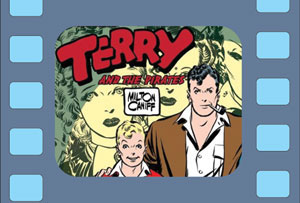 In May, comics creator and educator Ben Towle wrote a post on his blog entitled “Let’s Stop Using Film Terminology to Talk About Comics,” in which he suggested that using terms like “camera angle” and “shot” to describe comics storytelling may prevent creators from innovating new storytelling ideas that couldn’t be done in film. The post generated a fair amount of discussion around the Web (including this take on CBR).
In May, comics creator and educator Ben Towle wrote a post on his blog entitled “Let’s Stop Using Film Terminology to Talk About Comics,” in which he suggested that using terms like “camera angle” and “shot” to describe comics storytelling may prevent creators from innovating new storytelling ideas that couldn’t be done in film. The post generated a fair amount of discussion around the Web (including this take on CBR).
This week, the discussion continues here on the podcast, where Ben joins Tim and Mulele to talk about what inspired the post, possible reasons why we came to use film terminology in comics contexts, whether this really hobbles comics as a medium, and what (if anything) could or should be done to improve things.
Podcast: Play in new window | Download

Ben, I’ve always wondered if there was a missed opportunity by early adopters who used film terminology in comics not to use theater terminology that might be most useful in the comics medium. Jack Kirby, Stan Lee, Will Eisner, Joe Shuster, and many writers/artists came out of stage and theater construction. Many of them were employed by the New Deal to make stages or learn stagecraft in order to help produce plays in New York. Even in the later years, we have Levitz, Nicenza, Claremont, Byrne, Giffen, Alan Moore, and Grant Morrison all coming from theater backgrounds. The proscenium arch seems like a more apt metaphor than a film frame, because the arch designates a window that can be seen through many directions, whereas the filmic frame is meant to push in and out in very specific and calculated ways.
– l.k.
Gary – Hey, that’s interesting. I had no idea all of those comics folk had theater backgrounds. As I mention in the interview I definitely am more concerned with STAGING in my own work than any imaginary camera. More generally, though, yeah: theater is one of many related fields whose terminology seems as applicable–if not more applicable–to comics as film stuff.